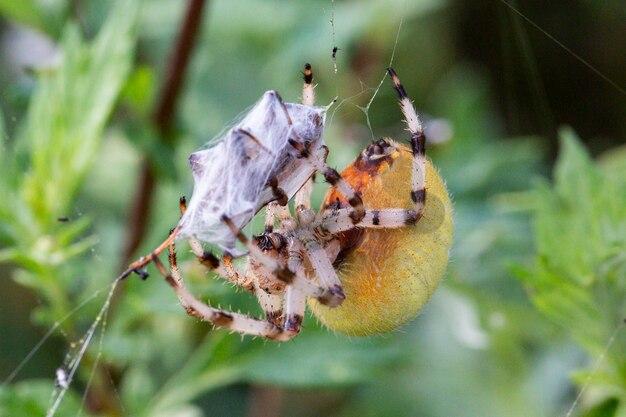Arthropods, the largest group of invertebrates on Earth, have been thriving for millions of years. From tiny insects to magnificent crustaceans, these creatures have conquered nearly every corner of our planet. But what is it that makes arthropods so incredibly successful? In this blog post, we will explore the factors behind their triumph. We will delve into their diverse diets, examine the different arthropod groups, and uncover the secrets of their energy acquisition. We will also discover how arthropods grow, learn about their unique characteristics, and explore their crucial role in the environment. So, let’s embark on this fascinating journey to unravel the mystery of why arthropods reign supreme in the animal kingdom.
Arthropods play a vital role in our ecosystems, and their success has not gone unnoticed by us humans. From providing essential services such as pollination and pest control to being sources of food and medicine, arthropods have become significantly intertwined with our daily lives. We will also explore the ways in which arthropods are useful to us, their interactions with humans, and dispel some common misconceptions about these incredible creatures. So, join us as we dive into the intriguing world of arthropods and discover the remarkable secrets behind their unparalleled success.

What Makes Arthropods So Successful
Arthropods are the true conquerors of the animal kingdom. From beetles to spiders and crustaceans, these critters seem to have it all figured out. But what exactly makes them so successful? Let’s delve into the fascinating world of arthropods and uncover the secrets behind their triumph.
A Recipe for Success
1. Exoskeleton: Nature’s Built-in Armor
One of the key ingredients in the arthropod success story is their exoskeleton. This external skeleton provides them with a sturdy framework that protects their delicate insides from the harsh outside world. It’s like they have their own personal suit of armor, ready to defend against all odds.
2. Superb Adaptability
Arthropods are masters of adaptation. With over a million known species, they have managed to occupy nearly every habitat on Earth. Whether it’s scorching deserts, freezing tundras, or murky depths of the oceans, arthropods have made themselves at home. They are the ultimate survivors, thriving in the face of adversity.
3. Impressive Mobility
It’s hard to keep up with arthropods, quite literally. Their jointed legs and wings give them an incredible range of motion. Whether it’s scuttling across the ground, climbing up walls, or even taking to the air, arthropods can move with unparalleled agility. They are the true acrobats of the animal world.
4. Fantastic Feeding Strategies
When it comes to food, arthropods have got it figured out. They have developed an array of ingenious feeding strategies. Some are fierce predators, like the voracious mantis, while others are expert scavengers, like the ever-resourceful cockroach. Arthropods have mastered the art of finding a meal, ensuring their survival.
5. Mating Maneuvers
Arthropods have some interesting tricks up their sleeves when it comes to romance. Their mating rituals can be downright bizarre and amusing. From the flamboyant dance of the peacock spider to the intricate love songs of crickets, arthropods know how to make a lasting impression. It’s no wonder their species continue to thrive.
6. Amazing Diversity
Perhaps the most remarkable aspect of arthropods is their sheer diversity. From the smallest insects to the largest crustaceans, they come in all shapes, colors, and sizes. With such an incredible variety, arthropods have managed to occupy every ecological niche imaginable. It’s like they’ve taken a page out of Mother Nature’s playbook and added their own unique twist.
The Reign of the Arthropods
In the vast tapestry of life on Earth, arthropods have woven themselves into every corner. Their success can be attributed to their exoskeletons providing protection, their adaptability to various habitats, their exceptional mobility, and their ingenious feeding strategies. Combined with their fascinating mating rituals and mind-boggling diversity, it’s no wonder that arthropods continue to dominate the animal kingdom. So, next time you spot a scuttling spider or a buzzing bee, take a moment to appreciate the resilience and charm of these incredible creatures.

FAQ: What Makes Arthropods So Successful
What do arthropods eat
Arthropods have diverse dietary preferences. Some feast on plant matter, while others devour other animals. For instance, spiders are known for their carnivorous diet, preying on insects. On the other hand, butterflies and bees find sustenance in nectar from flowers. They have a taste for the sweet life, quite literally.
What is the correct order of arthropod groups
The correct order of arthropod groups is as follows: Arachnida, Crustacea, Insecta, Chilopoda, and Diplopoda. It’s like a lineup of talented performers, each with their unique moves and quirks, ready to take the stage of the animal kingdom.
What is the largest group of arthropods
The largest group of arthropods is the insects. These tiny critters outnumber us humans by a staggering amount. They are the ultimate party crashers in the animal kingdom, dominating the guest list with their sheer numbers.
What is the biggest group of invertebrates
Arthropods hold the title for the biggest group of invertebrates. These invertebrate superstars include spiders, crabs, butterflies, and the ever-busy bees. They prove that success doesn’t always come with a backbone.
How do arthropods get energy
Arthropods, like us, get their energy through the food they consume. Whether it’s a herbivorous meal full of leafy greens or a carnivorous feast on smaller critters, arthropods know how to keep their energy levels high to conquer the world, one scuttle at a time.
Which arthropod group has no antenna
The arachnids, which include the beloved spiders and scorpions, are the arthropods without antenna. They navigate their world with grace and precision, relying on their other remarkable senses to guide them through life’s web of challenges.
What do arthropods look like
Arthropods are a diverse bunch, but they do share some general characteristics. They have segmented bodies, exoskeletons for protection, and jointed appendages for a wide range of motion. Picture them as the fashionistas of the animal kingdom, always rocking the latest trends in body structure.
What are the factors responsible for the success of arthropods on land
Arthropods have conquered land for several reasons. Their exoskeletons act as armor, shielding them from harm. Their efficient respiratory systems allow them to breathe easy on land. And let’s not forget their adaptability and sheer tenacity. If there’s an opportunity on land, arthropods will seize it with all their might.
How do arthropods grow
Arthropods follow a process called molting to grow. They shed their old exoskeletons to make way for a larger, more spacious home. It’s like trading in your cramped apartment for a luxurious penthouse, but with a bit more exoskeleton shedding involved.
What are the 5 major classes of arthropods
The five major classes of arthropods are Arachnida, Crustacea, Insecta, Chilopoda, and Diplopoda. They may sound like ancient Greek dance moves, but in reality, they represent the incredible diversity of arthropods, each with their own fascinating characteristics.
What makes arthropods so successful
Arthropods have a winning combination of adaptability, diversity, and resilience. They can thrive in various environments, from scorching deserts to lush rainforests. Their ability to constantly evolve and find innovative solutions to survive is what makes them truly successful. They are the problem solvers of the animal kingdom.
What do arthropods do
Arthropods wear many hats in the grand scheme of things. They pollinate flowers, providing vital ecosystem services. Some keep pest populations in check as natural pest control agents. Others serve as nature’s recyclers, breaking down organic matter. They are multitasking superheroes, performing a multitude of essential roles in the circle of life.
What do arthropods mean
The term “arthropods” is derived from the Greek words “arthro” meaning jointed and “pous” meaning foot. So, arthropods are quite literally the “joint-footed” creatures of the animal kingdom. Their jointed limbs allow them to scuttle, crawl, and scurry with impressive agility.
Why are arthropods called so
Arthropods are called arthropods because of their unique jointed limbs. These remarkable creatures have revolutionized the world of locomotion with their segmented legs, giving them a wide range of movement and making them the true dancers of the animal kingdom.
How are arthropods important to the environment
Arthropods play a crucial role in maintaining the balance of ecosystems. They are key pollinators, essential for the reproduction of many plant species. Additionally, they act as nature’s recyclers, breaking down organic matter and keeping nutrient cycles in motion. Without arthropods, the environmental orchestra would miss some vital players.
What are 5 characteristics of arthropods
The five characteristics that define arthropods are segmented bodies, exoskeletons, jointed appendages, specialized respiratory systems, and a highly diverse range of species. They are the multitasking champions of the animal kingdom, combining these traits to conquer land, air, and water.
How are arthropods useful to humans
Arthropods provide humans with numerous benefits. They pollinate crops, ensuring a bountiful harvest. They serve as a source of food for many cultures around the world, from shrimp to crickets. Medical advancements owe a lot to arthropods as well, with their unique compounds and substances used in pharmaceuticals. We have much to thank these small but mighty creatures for.
Are arthropods cold-blooded
Yes, arthropods are considered cold-blooded because their body temperature fluctuates with their surroundings. They rely on external heat sources, soaking up the Sun’s warmth or cooling down in the shade. They are the true chameleons of temperature regulation.
And there you have it, a comprehensive FAQ to unravel the secrets behind arthropod success. These joint-footed dancers have conquered land, water, and air with style and resilience, leaving their mark on the animal kingdom. So next time you spot a scurrying spider or a buzzing bee, take a moment to appreciate the remarkable world of arthropods. Open your eyes to their hidden wonders and let these tiny creatures spark your fascination with the complex tapestry of life on Earth.
